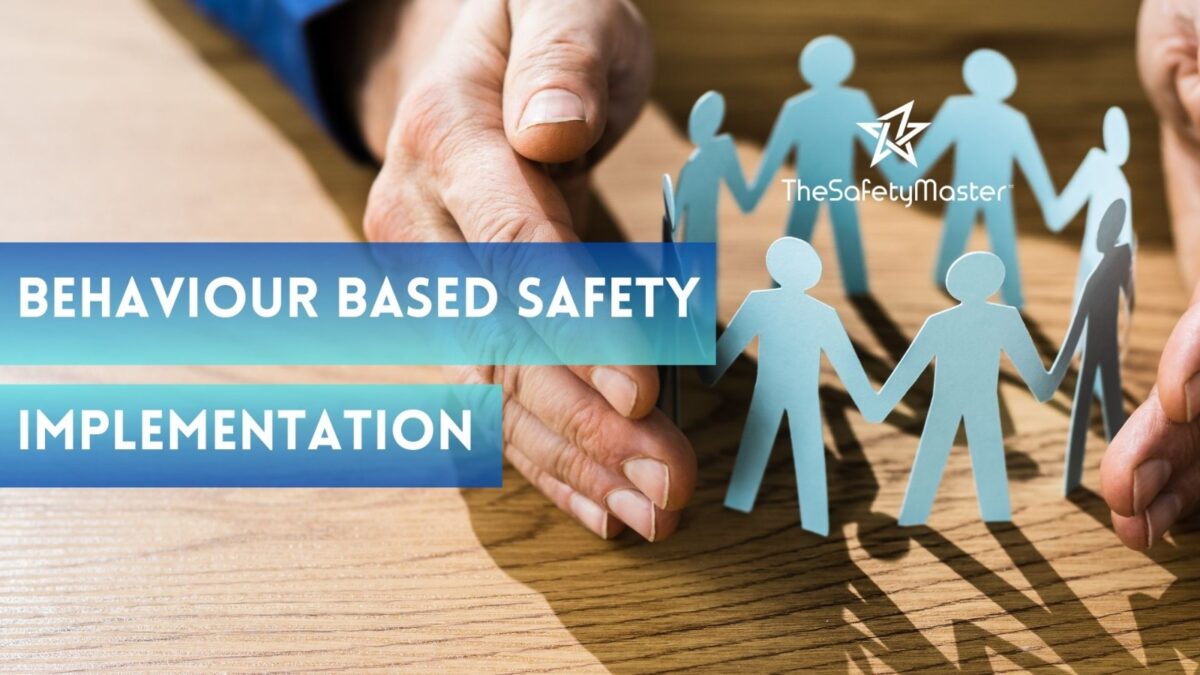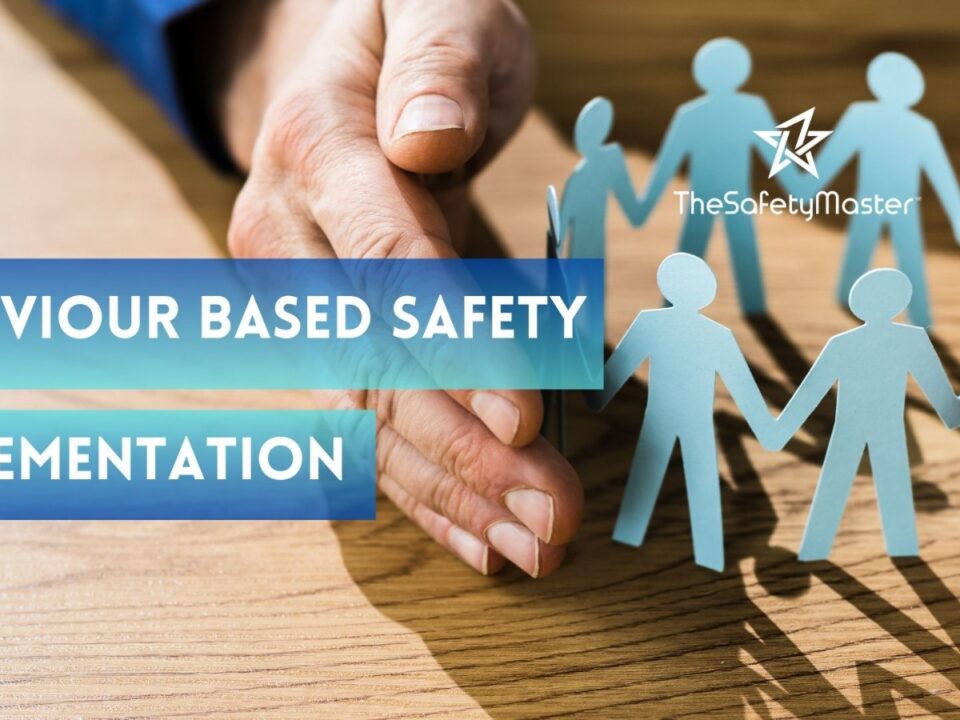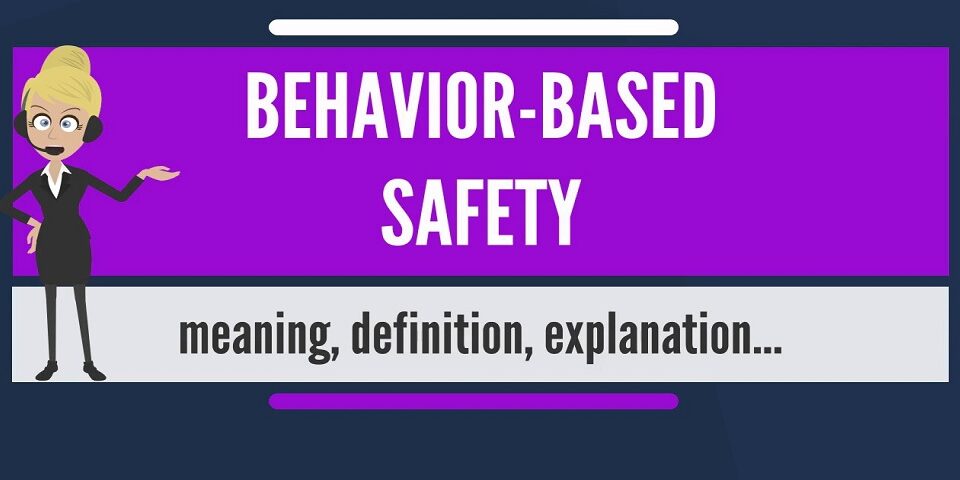Understanding the Significance of Organizational Behaviour in the Context of Behaviour-Based Safety Implementation

Evaluating Safety Performance: How Safety Audits Benefit Indian Industries for Sustainable Growth
November 18, 2024
The Importance of Process Safety Audit in Indian Industries: Mitigating Risks and Ensuring Standards Compliance
November 21, 2024In this article, we embark on an enlightening journey through the intricate realm of organizational behaviour, unveiling its profound significance within the context of behaviour-based safety implementation. Delving deep, we unravel the complexities that underlie the interplay between human actions and organizational performance. Brace yourselves for a captivating exploration that uncovers the secrets to fostering a culture of safety, empowering individuals, and driving unparalleled success. Prepare to gain valuable insights, actionable strategies, and a renewed understanding of the crucial role organizational behaviour plays in ensuring a safe and thriving work environment. Your quest for excellence begins here.
Introduction
Organizational behaviour is an intricate and captivating field that delves into the complexities of human behaviour within the workplace. It examines how individuals, groups, and organizations function and interact, providing valuable insights into the dynamics that shape organizational culture and effectiveness. One area where understanding organizational behaviour becomes crucial is in the implementation of behaviour-based safety programs. In this enlightening article, we embark on an in-depth exploration to grasp the significance of organizational behaviour in the context of behaviour-based safety implementation. We will unravel the intricate relationship between organizational behaviour and safety performance, highlighting how leadership, employee behaviour, and risk analysis play pivotal roles in creating a robust safety culture. Furthermore, we will uncover strategies for successfully implementing behaviour-based safety programs while overcoming potential challenges along the way
Defining Organizational Behaviour
Within the realm of corporate dynamics, Organizational Behaviour serves as a captivating domain, an intricate tapestry woven with the threads of human psychology and social interaction. It unveils the inner workings of an organization, delving into the intricacies of how individuals within a group behave and interact with one another. Defining Organizational Behaviour encompasses an exploration into various facets, including individual attitudes and values, group dynamics, communication patterns, leadership styles, and decision-making processes. At its core, Organizational Behaviour seeks to decipher the intricate dance between people and their work environment. It unravels the underlying motivations that shape employee behaviour within organizations, offering valuable insights into why individuals act in certain ways or exhibit certain patterns. By understanding these fundamental principles, organizations can effectively harness this knowledge to foster a positive work culture that promotes synergy, cooperation, productivity, and ultimately success.
Organizational Behaviour encapsulates not only individual actions but also collective behaviour. It considers how groups form within organizations based on shared interests or objectives. Moreover, it explores how these groups function collectively – either harmoniously collaborating towards common goals or facing challenges arising from conflicts of interest or power struggles. Through analysing organizational behaviour patterns and group dynamics carefully, organizations can build cohesive teams capable of achieving remarkable feats while nurturing a sense of belonging and camaraderie among employees.
In essence, fathoming Organizational Behaviour provides organizations with crucial tools for addressing workplace issues such as conflict resolution and motivation enhancement strategies to boost employee morale. Create an environment where employees feel valued, respected, and empowered further bolsters job satisfaction levels, resulting in higher productivity
Understanding Behaviour-Based Safety Implementation
Behaviour-based safety implementation is a multifaceted process that centres on identifying and influencing the behaviours of individuals within an organization to enhance safety performance. At its core, this approach recognizes that human behaviour plays a crucial role in creating a safe work environment. It moves beyond traditional safety measures by focusing on the actions, decisions, and attitudes of employees at all levels.
In this context, behaviour-based safety implementation seeks to identify and address both safe and at-risk behaviours exhibited by employees. It aims to create a positive safety culture that encourages proactive actions and reduces the likelihood of accidents or incidents in the workplace. By understanding the factors influencing employee behaviour, organizations can establish effective strategies for promoting safer practices.
One thought-provoking aspect of behaviour-based safety implementation lies in its recognition of the complexity of human behaviour. It acknowledges that individuals are not solely motivated by external factors but are also influenced by their own thoughts, beliefs, and experiences. By delving into these underlying factors, organizations can design interventions that appeal to employees’ intrinsic motivations while promoting a sense of ownership over their own safety.
Ultimately, behaviour-based safety implementation offers an optimistic outlook for organizations aiming to improve their overall safety performance. By empowering employees with knowledge about safe practices and fostering a supportive work environment for open communication, organizations can create positive behavioural changes that lead to reduced accidents, increased productivity, and enhanced employee well-being.
The Link Between Organizational Behaviour and Behaviour-Based Safety
The Link Between Organizational Behaviour and Behaviour-Based Safety: In the intricate tapestry of organizational behaviour, a profound connection is woven between the dynamics of human interaction and the realm of safety. When exploring behaviour-based safety implementation, it becomes evident that organizational behaviour serves as the foundation upon which this framework rests. At its core, organizational behaviour encompasses the patterns of individual and collective actions within an organization, shaping its culture and driving its success or downfall.
Behaviour-based safety, on the other hand, strives to cultivate a proactive approach to risk mitigation by focusing on observable behaviours that contribute to accidents or injuries in the workplace. By delving into this symbiotic relationship between organizational behaviour and behaviour-based safety, a fascinating interplay emerges. The attitudes, beliefs, and values entrenched within an organization’s culture profoundly influence employee behaviours – be it adherence to safety protocols or deviant actions that jeopardize well-being.
Thriving organizations recognize this intricate interdependence and harness it to foster a harmonious synergy between their employees’ behaviours and safety objectives. They understand that by cultivating positive organizational behaviours such as open communication channels, shared accountability, and continuous learning opportunities, they create an environment where employees embrace safe practices naturally. This alignment ultimately leads to enhanced safety performance while nurturing a sense of empowerment among individuals who contribute their best selves towards a secure work environment.
Let us delve deeper into this captivating nexus between organizational behaviour and behaviour-based safety implementation – uncovering not only the theoretical foundations but also pragmatic strategies employed by successful organizations worldwide. Embrace the notion that through understanding these dynamics intimately lies our power to transform workplaces into havens where both productivity soars high above expectations while leaving no room for compromise when it comes to safeguarding lives.
The Role of Leadership in Organizational Behaviour and Safety
Leadership plays a paramount role in shaping organizational behaviour and ensuring safety within the workplace. The actions and decisions of leaders have a ripple effect on employees, influencing their attitudes, behaviours, and overall safety culture. Effective leaders not only set clear expectations for safe practices but also lead by example, demonstrating their commitment to safety through consistent actions. By fostering open communication channels and creating a supportive environment, leaders can empower employees to actively participate in safety initiatives. An exceptional leader understands the power of inspiration, motivation, and encouragement in influencing organizational behaviour towards safety excellence. They inspire their teams by emphasizing the importance of individual well-being and showcasing the positive outcomes that result from a strong safety culture. By empowering employees to take ownership of their own safety as well as that of their colleagues, leaders promote a collective sense of responsibility that can significantly reduce accidents and incidents.
Moreover, visionary leaders recognize the value of ongoing training and development programs to enhance employee competence in maintaining a safe work environment. They invest in resources that provide education on hazard recognition, risk assessment methodologies, and best practices for mitigating potential risks. This investment not only equips employees with vital knowledge but also fosters a sense of trust between management and staff.
In essence, leadership serves as the driving force behind organizational behaviour related to safety. When leaders prioritize employee welfare above all else and actively engage with staff at all levels, they create an atmosphere where individuals feel valued, motivated, and empowered to contribute positively towards achieving an optimal level of safety within the organization.
The Impact of Employee Behaviour on Safety Culture
The Impact of Employee Behaviour on Safety Culture: Within the realm of organizational behaviour, employee behaviour plays a pivotal role in shaping the safety culture within an organization. Every action, every decision made by employees has the potential to either strengthen or weaken the safety environment. It is through their behaviours that a positive and proactive safety culture can be fostered.
Employee behaviours that prioritize safety create a ripple effect throughout the organization, influencing their colleagues and shaping the overall mind-set towards safety. When employees consistently demonstrate safe practices, it not only reduces accidents and injuries but also instils a sense of trust and confidence among their peers. By actively engaging in safe behaviours, employees send a powerful message that safety is valued and should be upheld at all times.
However, on the flip side, if employee behaviours deviate from safe practices or display complacency towards safety protocols, it can have detrimental effects on the entire organization. Negligent actions can compromise not only an individual’s well-being but also erode trust in management’s commitment to safety. Therefore, it becomes imperative for organizations to cultivate a culture where employees feel empowered to embrace safe behaviours and understand how their actions directly contribute to creating a safer workplace.
By recognizing and acknowledging the profound impact of employee behaviour on safety culture, organizations can take proactive steps to promote positive engagement with safety protocols. This includes providing comprehensive training programs that emphasize the importance of individual responsibility for maintaining robust safety standards. Additionally, fostering open communication channels between management and employees allows for continuous feedback and reinforcement of safe practices
Analysing Organizational Behaviour to Identify Safety Risks
Analysing Organizational Behaviour to Identify Safety Risks: The profound understanding of organizational behaviour is paramount when it comes to identifying and mitigating safety risks within a workplace setting. This intricate process involves delving deep into the intricate web of interdependencies, examining behavioural patterns, and deciphering the underlying motivations that drive employee actions. By meticulously scrutinizing the collective behaviour of individuals within an organization, one can unveil valuable insights into potential safety hazards that might otherwise go unnoticed.
One compelling facet of analysing organizational behaviour is exploring the role of communication as a catalyst for safety risks. It is fascinating to observe how different communication styles and channels impact overall safety awareness within a company. By studying interactions between employees, both verbal and non-verbal, one can decipher whether there are gaps in information sharing or breakdowns in understanding that may lead to unsafe practices. Furthermore, this analysis provides an opportunity to develop tailored strategies for fostering clear and effective communication channels, thereby fortifying the overall safety culture.
Another captivating aspect lies in examining organizational norms and values through the lens of safety risks. Each organization possesses its unique set of core values that shape employee behaviours and attitudes towards safety. By studying these deeply ingrained beliefs and social norms, one can identify any misalignment with desired safe practices. This analysis allows leaders to devise targeted interventions aimed at aligning these cultural elements with a strong emphasis on promoting safe behaviours throughout the organization.
In essence, scrutinizing organizational behaviour to identify safety risks offers an invaluable opportunity for organizations to proactively address potential hazards before they escalate into accidents or injuries
Strategies for Implementing Behaviour-Based Safety Programs
Strategies for Implementing Behaviour-Based Safety Programs: When embarking on the implementation of behaviour-based safety programs, organizations can adopt various strategies to ensure success. Firstly, fostering a culture of open communication and collaboration is crucial. Encouraging employees to actively participate in identifying safety hazards and suggesting improvements creates a sense of ownership and engagement.
Secondly, providing comprehensive training is essential. By equipping employees with the knowledge and skills to recognize potential risks and respond effectively, organizations empower their workforce to make informed decisions that prioritize safety.
Additionally, establishing clear goals and performance expectations promotes accountability and motivates individuals to adhere to safe behaviours consistently. Recognizing and rewarding desired behaviours further reinforces the importance of safety throughout the organization.
By combining these strategies, organizations can create a positive safety culture where employees are actively involved in maintaining a safe work environment. This not only reduces the likelihood of accidents but also enhances job satisfaction, productivity, and overall organizational success.
Overcoming Challenges in Behaviour-Based Safety Implementation
Overcoming Challenges in Behaviour-Based Safety Implementation: Navigating the treacherous waters of behaviour-based safety implementation can often be fraught with challenges. One such hurdle is resistance from employees, who may be sceptical or hesitant to embrace new safety protocols. Encouragingly, this obstacle can be surmounted through clear communication and engaging training programs that highlight the benefits of behaviour-based safety. By fostering a culture of open dialogue and involving employees in the decision-making process, organizations can inspire a sense of ownership and instil confidence in their workforce.
Another significant challenge lies in sustaining momentum and preventing complacency once behaviour-based safety programs are initially implemented. It is crucial to continuously reinforce positive behaviours and celebrate successes along the way. Organizations can achieve this by implementing recognition systems that reward employees for demonstrating safe practices consistently. Moreover, incorporating regular refresher courses and ongoing feedback mechanisms will help reinforce the importance of behaviour-based safety, ensuring it remains at the forefront of employees’ minds.
Lastly, organizational change management poses its own set of hurdles during behaviour-based safety implementation. Leaders must effectively communicate why these changes are necessary and how they align with the organization’s overall vision for a safer workplace. By clearly articulating the benefits, leaders can help alleviate concerns and foster support among employees at all levels. Emphasizing collaboration, providing resources for skill-building, and offering continuous support throughout the transition will empower individuals to embrace change positively.
Ultimately, while challenges may arise during behaviour-based safety implementation, they present opportunities for growth and improvement. By addressing resistance head-on, sustaining momentum through recognition systems and continual reinforcement, as well as employing effective change management strategies; organizations can overcome these obstacles on their journey towards creating a safer working environment for all
Measuring the Effectiveness of Organizational Behaviour on Safety Performance
In the realm of gauging the efficacy of organizational behaviour on safety performance, meticulous measurement becomes an indispensable tool. The process involves meticulous observation, analysis, and assessment of various indicators that reflect the impact of organizational behaviour on safety outcomes. By examining incident rates, near-miss reports, safety-related compliance metrics, and employee feedback surveys, organizations can unravel the intricate connections between behaviours exhibited within their structure and the safety performance achieved. Measuring effectiveness serves as a compass guiding organizations towards sustainable improvements in safety performance. The careful analysis of data allows for a profound understanding of patterns and trends, leading to targeted interventions that foster positive behavioural changes. Moreover, these measurements illuminate areas requiring additional focus our resources, enabling organizations to allocate their efforts effectively and proactively address potential risks.
By embracing a proactive approach to measuring effectiveness, organizations can instil a sense of empowerment among employees while fostering a culture of continuous improvement. Consistently tracking progress reinforces positive behaviours and provides tangible evidence that organizational behaviour plays an instrumental role in shaping safety outcomes. Such understanding not only enhances overall safety performance but also cultivates a collective optimism among individuals within the organization –a belief that every individual has the power to contribute positively to their own well-being as well as that of their colleagues.
Overall, through comprehensive measurement efforts combined with strategic interventions based on identified trends, organizations can reinforce values such as accountability and responsibility while uplifting employee morale. This holistic approach creates an environment where individuals are inspired to take ownership over their actions and are empowered to make conscientious choices when it comes to workplace safety
Case Studies: Successful Organizational Behaviour and Behaviour-Based Safety Implementation
In the realm of successful organizational behaviour and behaviour-based safety implementation, several case studies stand out, exemplifying the transformative power of these practices. One such case involves a manufacturing company that experienced a significant reduction in workplace accidents after implementing an extensive behaviour-based safety program. Through continuous training and reinforcement, employees developed a proactive mind-set towards safety, leading to a remarkable decrease in incidents and a boost in overall productivity. This success story highlights the immense value of cultivating a safety-conscious culture within an organization. Another inspiring case study revolves around a construction firm that prioritized organizational behaviour as the cornerstone of its safety initiatives. By fostering strong leadership, open communication channels, and shared responsibility among workers, this company achieved remarkable results in terms of accident prevention and employee well-being. Through comprehensive training programs and regular safety audits, they effectively identified potential risks and implemented preventive measures accordingly. As a result, not only did their safety performance soar but also their reputation for being an employer that genuinely cares about its workforce.
Lastly, in the healthcare sector, one hospital demonstrated exceptional organizational behaviour by successfully implementing behaviour-based safety strategies amidst complex operational challenges. By encouraging staff engagement through continuous improvement initiatives and providing them with necessary resources to ensure patient safety at all times, this institution witnessed significant reductions in medical errors and preventable incidents. The dedication displayed by healthcare professionals combined with a supportive organizational culture ultimately led to safer patient outcomes while instilling pride among employees.
These enlightening case studies underline how effective organizational behaviour coupled with behaviour-based safety implementation can revolutionize workplaces across various industries. By embracing these practices wholeheartedly and tailoring them to specific organizational needs, companies can foster safer environments while empowering their workforce – nurturing an atmosphere where individuals thrive both personally and professionally
Conclusion
As we conclude this profound exploration into the realm of organizational behaviour and its vital role in behaviour-based safety implementation, one cannot help but be awestruck by the intricate interplay between employee behaviour, leadership, and safety culture. The intricacies of human motivation and organizational dynamics have been unravelled, revealing a tapestry of opportunities for creating safer work environments. With a steadfast commitment to understanding and harnessing the power of organizational behaviour, organizations can pave the way for a future where workplace safety is not just a priority but an ingrained value. Let us embark on this journey together, armed with knowledge and inspired by the potential to shape a safer tomorrow.




